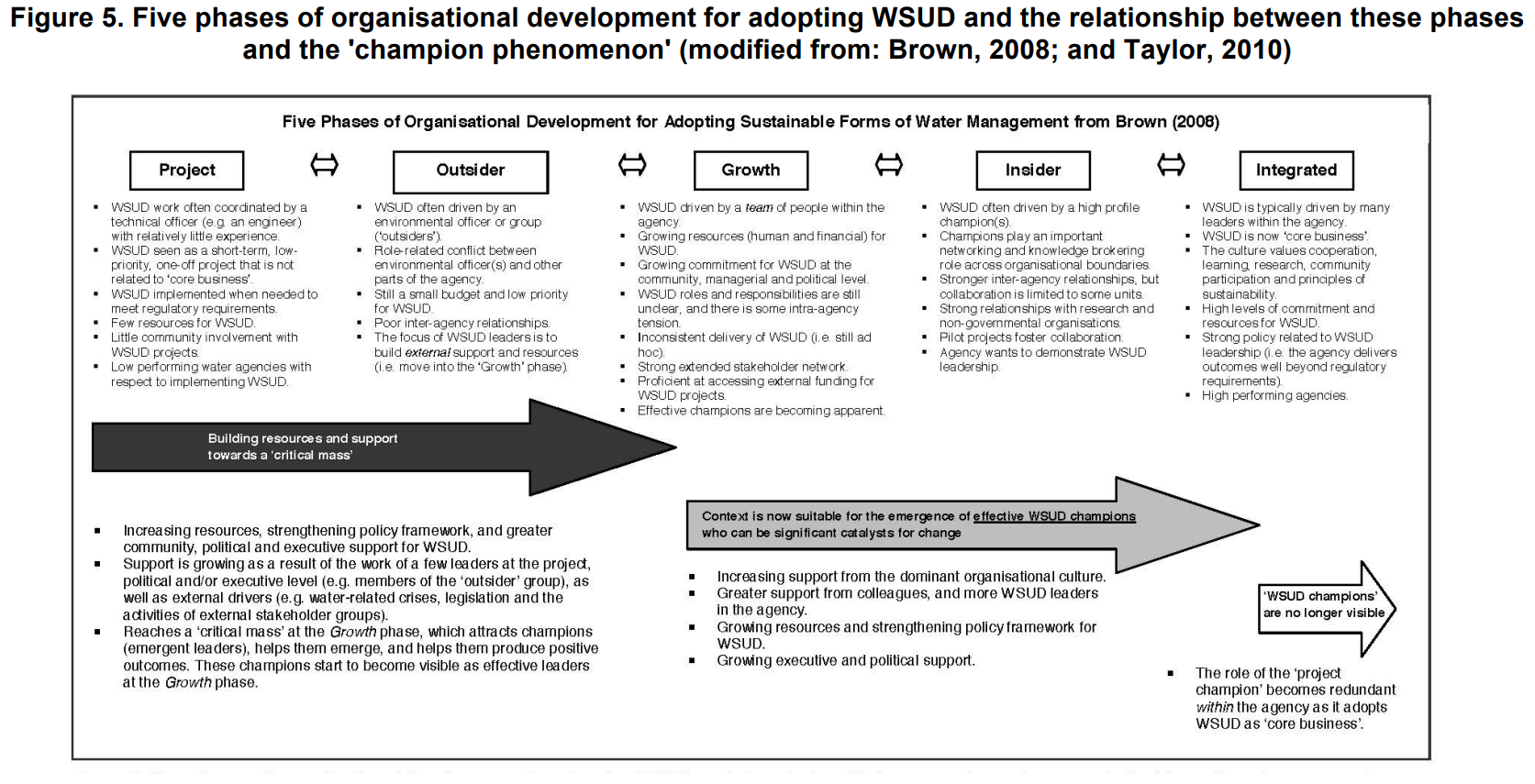Water sensitive professionals
Contact
Introduction
CRCWSC research clarifies the challenges and establishes the processes and tools needed to develop water sensitive professionals.
Our research on water sensitive professionals has identified some interesting findings:
- Water sensitive professionals can successfully influence policy by incorporating the three essential elements of ‘entrepreneurs’, ‘networks’ and ‘timing’. (Scientists and policy influence: a literature review)
- What skills and knowledge do water professionals need to lead change? A T-shaped water professional possesses team building, collaborative and problem-based skills and importantly, deep disciplinary and functional knowledge. (Developing T-Shaped Water Professionals: Building Capacity in Collaboration, Learning, and Leadership to Drive Innovation)
- A study of the capacity of water scientists to influence policy makers analysed the tactics for pitching, communicating and using evidence. Participants could use scientific evidence effectively, but could not articulate risk and economic impacts, or propose appropriate policy instruments to gain traction. (Scientists versus policy makers: building capacity for productive interactions across boundaries in the urban water sector)
- A survey of 122 water professionals discovered that the most in-demand skills were economic justification, strategic planning, policy and regulation and management, maintenance and compliance of water sensitive urban design. At least 86% of respondents indicated they don’t have time or money to undertake professional development activities. (Delivering water sensitive city professional learning – Understanding the learning needs and preferences of the Australian urban water sector)
- Researchers seeking to influence government policy should consider the range of factors including: policy windows, punctuated equilibrium and establishing credibility and trust. (The challenges of translating science and research into policy)
You will find a range of research reports on water sensitive professionals under the categories below.
Water Sensitive Professionals reports
- Scientists and policy influence: a literature review
- Developing T-Shaped Water Professionals: Building Capacity in Collaboration, Learning, and Leadership to Drive Innovation
- Scientists versus policy-makers: building capacity for productive interactions across boundaries in the urban water sector
- Delivering water sensitive city professional learning – Understanding the learning needs and preferences of the Australian urban water sector
- Risk governance in the water sensitive city: practitioner perspectives on ownership, management and trust
- Scientists versus policy-makers: building capacity for productive interactions across boundaries in the urban water sector
- A methodology to enable exploratory thinking in strategic planning
- Catalysing WSCs through professional learning: design and delivery recommendations
- Delivering water sensitive city professional learning – Understanding the learning needs and preferences of the Australian urban water sector
- Opportunity Structures: Understanding Capacity for Policy Innovation
- A framework for understanding risk perception, explored from the perspective of the water practitioner
- Guiding urban water management in areas that experience high seasonal groundwater: Expert Panel report.
Tools and guidelines
The following tools, guidelines and manuals have been developed from research on water sensitive professionals:
- Financial justification is important to build organisational and political support for business cases, but knowing how to sell your water sensitive business case will help it resonate with decision makers and stakeholders.
- ‘Policy influence: tactics and strategies for researchers’ can help scientists understand the rules of the science–policy game, the opportunities for influence and how to exploit them.
- Achieving successful water sensitive city outcomes requires organisations to understand the learning needs of water professionals and develop the skills of future water leaders.
Infographics
Infographic 1
Strategies and tactics for influencing decision making (CRC for Water Sensitive Cities, 2018. Strategies and tactics for influencing decision making. Melbourne, Australia: CRC for Water Sensitive Cities, p. 1.)
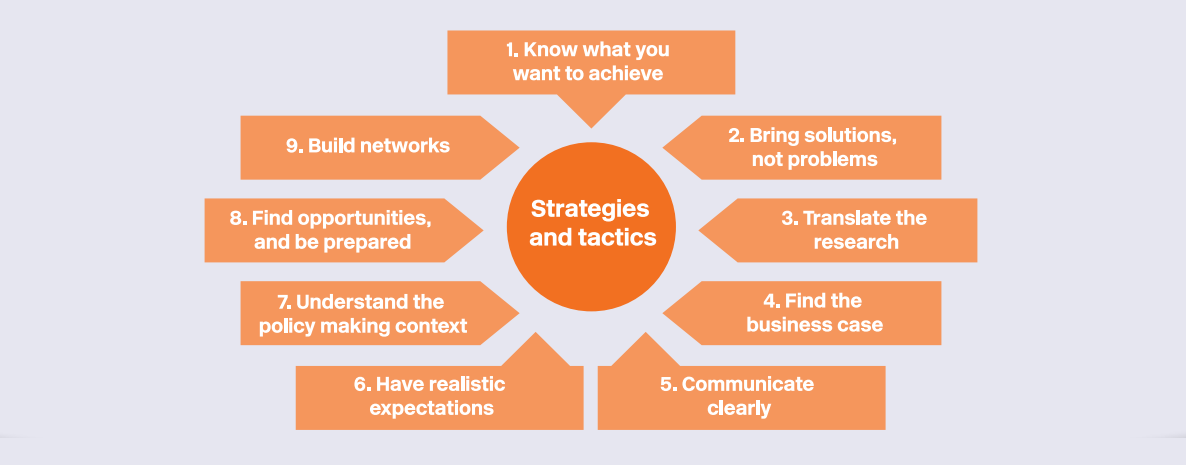
Infographic 2
Wheel of organisational behaviour (Dobbie et al., 2017. Mechanisms for unpacking socio-institutional pathways for change: a research compendium from A4.1. Melbourne, Australia: CRC for Water Sensitive Cities, p. 20.)
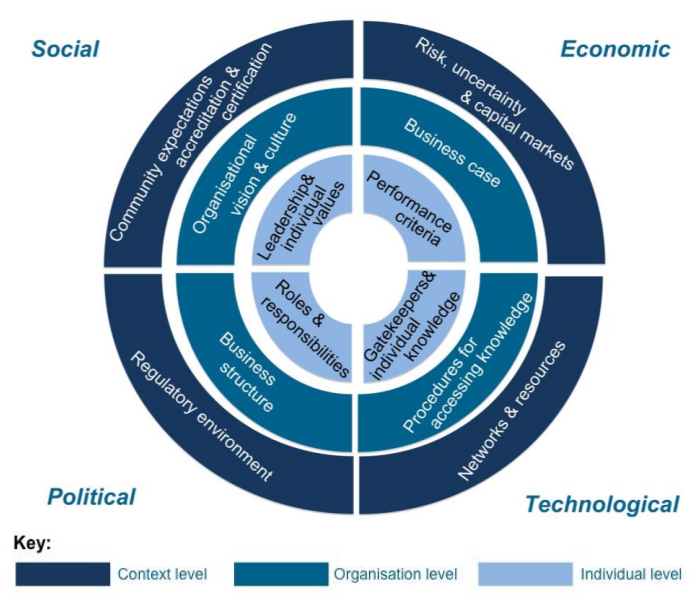
Infographic 3
The IAD model (Laing M, 2015. Scientists and policy influence: a literature review. Melbourne, Australia: CRC for Water Sensitive Cities, p. 16.)
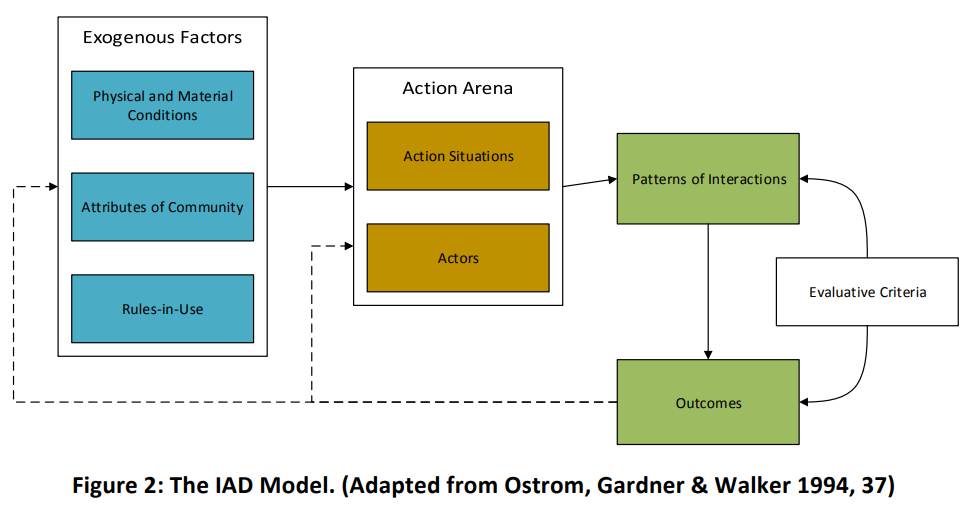
Infographic 4
Multiple streams model (Laing M, 2015. Scientists and policy influence: a literature review. Melbourne, Australia: CRC for Water Sensitive Cities, p. 25.)
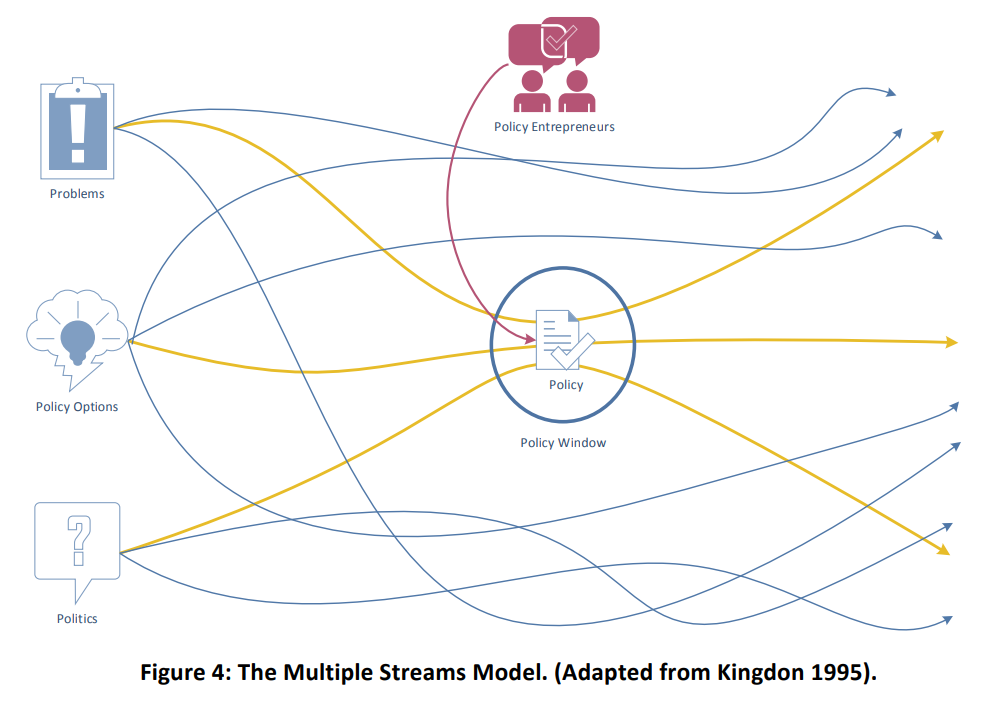
Infographic 5
T-shaped water professionals (McIntosh BS and Taylor A, 2013. ‘Developing T-Shaped Water Professionals: Building Capacity in Collaboration, Learning, and Leadership to Drive Innovation’. Journal of Contemporary Water Research and Education, 150: pp. 6–17.)
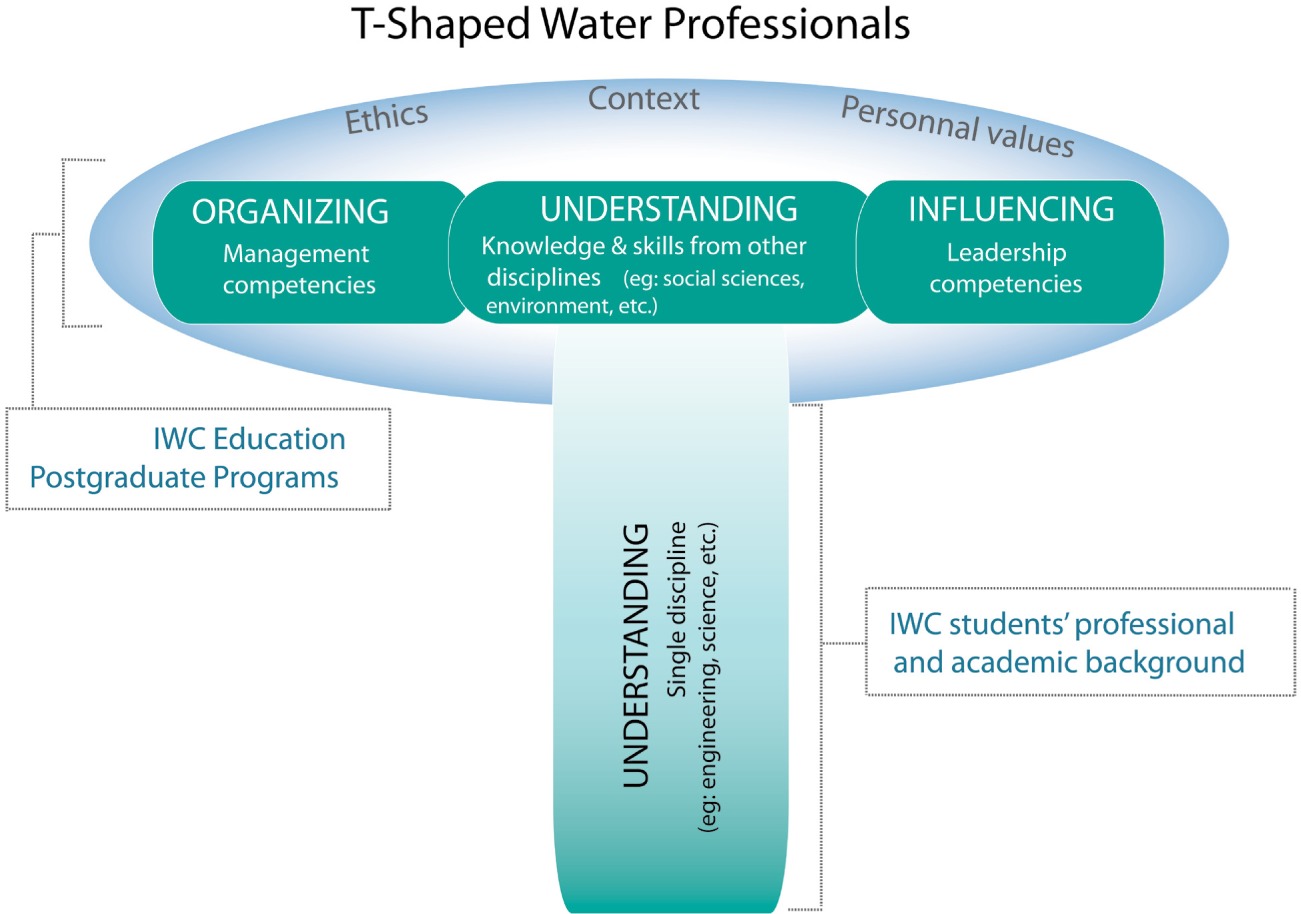
Infographic 6
Organisational environment for promoting change toward water sensitive cities (McIntosh et al., 2015. Water Sensitive Cities skills and knowledge needs – an Australian and international assessment. Melbourne, Australia: CRC for Water Sensitive Cities, p. 12.)
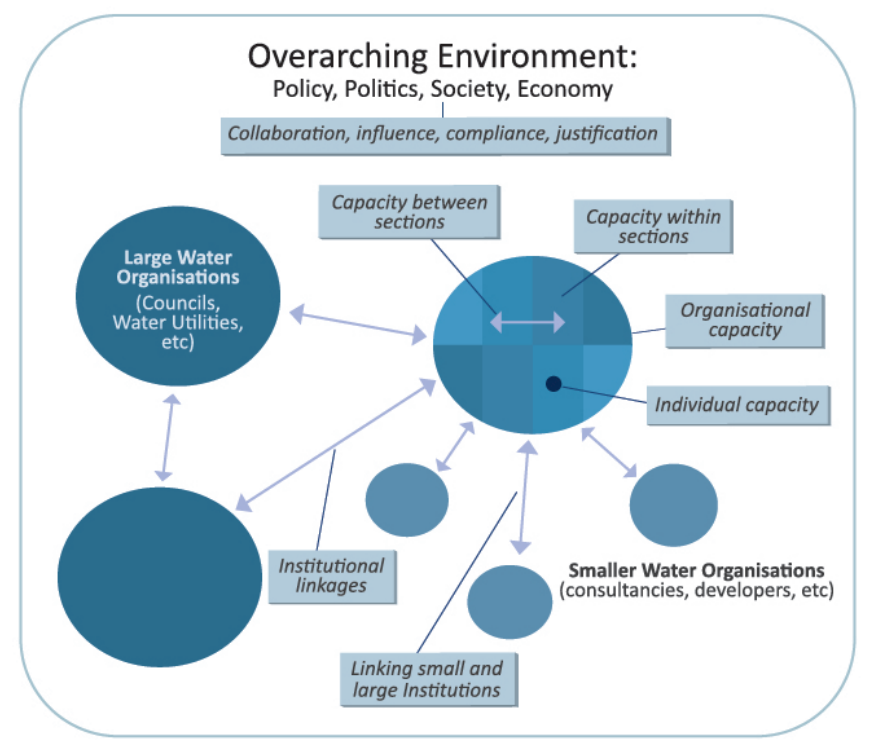
Infographic 7
Five phases of organisational development for adopting WSUD and the relationship between these phases and the ‘champion phenomenon’ (McIntosh et al., 2015. Water Sensitive Cities skills and knowledge needs – an Australian and international assessment. Melbourne, Australia: CRC for Water Sensitive Cities, p. 46.)
